This article was co-authored by Luba Lee, FNP-BC, MS. Luba Lee, FNP-BC is a Board-Certified Family Nurse Practitioner (FNP) and educator in Tennessee with over a decade of clinical experience. Luba has certifications in Pediatric Advanced Life Support (PALS), Emergency Medicine, Advanced Cardiac Life Support (ACLS), Team Building, and Critical Care Nursing. She received her Master of Science in Nursing (MSN) from the University of Tennessee in 2006.
wikiHow marks an article as reader-approved once it receives enough positive feedback. In this case, 90% of readers who voted found the article helpful, earning it our reader-approved status.
This article has been viewed 117,122 times.
Almost everyone needs a first aid kit at some point. If you're planning a camping trip, it is vital to your well-being to have a travel-appropriate first aid kit. The ideal first aid kit for camping will come stocked with items to help with any potential problems, including sometimes life-saving medication and medical supplies. Before you set out for a week of camping, make sure to follow these instructions to assemble a safe, portable first aid kit.
Steps
Deciding on a Container
-
1Make a decision about size. The size of a first aid kit depends on how it is being used, and how many people will use it. In general, if your first aid is coming with you on a camping excursion it should be big enough to stock adequate supplies for everyone in attendance but also lightweight and portable.[1]
- If you're backpacking alone or with one or two other people, keep it on the smaller side as the fewer items in your backpack the better. Added weight can cause back strain and fatigue that can interfere with your journey.
- If you're camping with a big group, family-sized first aid kits are available online and at camping and department stores.
- If you're using an RV or a car camper, you should consider investing in a car emergency kit, sold online or in camping stores, that includes car essentials like cable ties, bungee cords, and spark plugs in the event of an automobile emergency.
-
2Decide what to use as the container. First aid kits come in all shapes and sizes, and are built from a variety of materials. While some people use their backpacks/tote bags or cardboard boxes as first-aid kits, for camping you will need a waterproof container that seals shut. Go for materials like plastic, metal, and tin. Remember, size matters. Base what you use as a container on the number of fellow travelers and the length of your trip. If you're comfortable crafting a kit yourself, possible containers include:
- Lunch boxes, food tins, tackle boxes, and other food storage containers, reusable or disposable. Very helpful are First Aid boxes from Stock of the Army Medical Corps. Newer versions are plastic-made and have a tightening gasket plus the Red Cross badge outside.
- A zipper top clear plastic bag.
- Clean plastic food containers.[2]
Advertisement -
3Know where to purchase a first aid kid. If you're not into DIY creations, purchase a first aid kit. Costs vary depending on size, whether the kit is stocked, and its material.
- You can find first aid kits at many mass merchandise retailers, such as drug stores, grocery stores, discount stores, and convenience stores.
- Speciality retailers, such as outdoor and camping stores, can provide first aid kits that are camping-specific. The employees should also be able to answer any questions you have, so this would be a great option if you're new to camping.
- First-aid kits are available online. However, you should avoid purchasing a first-aid kit online if you're unfamiliar with camping and do not know exactly what you're looking for.[3]
Stocking a First Aid Kit
-
1Collect wound and burn care. You need to be prepared for accidents while camping, and having supplies ready in the event of a wound or a burn is important. Get these items together for your kit:[4]
- Bandages, in assorted sizes and shapes. Make sure to include butterfly bandages, which will hold the edge of a deep cut together, and triangular bandages to create slings or hold dressings.
- Blister pads
- Gauze pads
- Elastic bandages for wrapping sprains
- Moleskin
- Q-tips
- Antiseptic wipes
- Antibiotic cream , e.g. PVP Iodine solution and / or ointment.
- Burn ointment
- Rubbing alcohol, to clean tools such as tweezers in the event they are needed for an injury
- Hydrogen Peroxide about 3 % as solution.
- Some plastic vials with sterile NaCl 0,9% solution may be very helpful to rinse dirt away from the eyes or for cleaning a dirty wound as 1st step care.
-
2Gather medical essentials. While on the trail, anything you need for your personal medical care should be packed in a first aid kit.
- Any prescription medications you or your fellow travelers use.
- Over-the-counter pain management medication, like aspirin (not for children under 12 since it could cause Reyes syndrome) and ibuprofen.
- Gastrointestinal meds, such as antacids and anti-diarrheal medication.
- Antihistamines, such as diphenhydramine (Benadryl) and non-sedative loratadine (Claritin) and steroid anti-itch cream, such as hydrocortisone cream in the event of allergic reactions.
- Topical antibiotic cream to treat small, shallow wounds.
-
3Include tools. While camping, you will need a variety of tools to get through snares and wounds on the trail. In your first aid kit, you should store:
- Tweezers
- Scissors
- Magnifying glass
- Safety pins
- Duct tape
- Needle with thread, in the event repairs are needed
- Medical gloves, which are needed for handling unsanitary materials
- Waterproof matches and fire starter
- Water purification tablets, in the event you run out of water and need to use stream or lake water
- Small-edge razor blade
- Fingernail clippers
- Flashlight
- A variety of batteries
- Emergency blanket, which is an aluminum style reflective blanket to have on hand if temperatures drop dangerously low or if you get wet[5]
-
4Take a variety of sprays and creams. Depending on weather and other conditions, you may need some of the following creams and sprays on your trip:
- Anti-itch creams or sprays, particularly those that help relieve itching and pain from bug bites and contact with poisonous plants
- Burn relief sprays
- Petroleum jelly for chafing
- Lip balm
- Sunscreen
-
5Pack any miscellaneous items specific to your circumstances. These additions are optional, and depend whether you need them for your personal care.[6] :
- Epi-pen, if you suffer from severe allergic reactions.
- Multivitamins, if you have a special diet plan.
- Snake-bite kit if you're hiking in an area where snakes are present.
- Dog boots, if you're hiking with a dog. These can protect their feet on harsh terrain.
- Baby wipes, if you have a small child.
- Anti-chafing of anti-friction cream, if you're hiking in humid environments.
-
6Consider weather conditions. Depending on what the weather will be during your camping trip, special supplies might be needed. Make sure to check the forecast before setting out.
- If you're camping in hot or humid conditions, bring waterproof sunscreen and lip balm that is at least SPF 15, coolers for drinks and food, and clothing made from light fabrics like nylon and polyester.
- If you're camping somewhere cold, bring chapstick and moisturizer as winter can lead to dry, irritated skin.
Assembling a First Aid Kit
-
1Organize your supplies. Group items together based on their usability. That is, keep your medical supplies in one section, your burn wound and care supplies in another, and so on. If you bought your first aid kit online or from a retailer, they should have separate sections built-in. If not, you can glue in cardboard or plastic as a barrier or keep items in small plastic bags together. Organization is important as, in the event of an emergency, you should be able to locate needed items fast.
-
2Figure out what needs to go in a plastic bag. Some things in your first aid kit need to be sealed in plastic bags before being stored. Make sure you know what to bag.
- Anything with a strong scent, like lotion and some antifungal creams, should be bagged to mask the smell and deter predators.
- If you're camping at a faraway location and taking your first aid kit on a plane, you'll need travel-sized versions of liquids, gels, and creams. For carry-on, all liquids must be in containers of 3.4 ounces or less and these bottles must all be placed together in a ziplock plastic bag. This bag can be no more than one quart in size.[7]
-
3Give your kit a check-up before you leave. The night before you leave for your camping trip, make sure all items in the first aid kit are stores and ready. Make sure medications are not expired, batteries are in working order, tweezers and other tools are sharp and ready.[8]
Things You'll Need
- Adhesive bandages (varying sizes)
- Rubbing Alcohol
- Anti-bacterial cream
- Anti-itch spray
- Q-tips
- Blister pads
- Burn spray or cream
- Emergency Blanket
- Small Edge Razor Blade
- Fingernail Clippers
- Moleskin
- Antiseptic wipes
- Antibiotic cream
- Digestive distress medicines
- Hydrogen Peroxide
- Needle with thread
- Waterproof matches and fire starter
- Water Purification Tablets
- Sunscreen
- Lip Balm
- Epi-pen
- Disinfecting towelettes or sanitizing gel
- Elastic bandages
- First aid manual
- Flashlight
- Magnifying glass
- Medical tape
- Over-the-counter allergy medicine
- Pain relievers
- Petroleum jelly
- Reclosable plastic bags
- Scissors
- Sterile gauze rolls and pads
- Sterile gloves
- Triangular bandages and safety pins
- Tweezers
References
- ↑ http://www.ebay.com/gds/First-Aid-Kits-Buying-Guide-/10000000177404942/g.html
- ↑ http://www.ebay.com/gds/First-Aid-Kits-Buying-Guide-/10000000177404942/g.html
- ↑ http://www.ebay.com/gds/First-Aid-Kits-Buying-Guide-/10000000177404942/g.html
- ↑ https://www.webmd.com/first-aid/first-aid-tips
- ↑ http://blog.outdoorherbivore.com/wilderness/first-aid-kit-for-backpacking/
- ↑ http://blog.outdoorherbivore.com/wilderness/first-aid-kit-for-backpacking/
- ↑ https://www.cprcertified.com/blog/essential-first-aid-packing-tips-for-summer-vacations
- ↑ http://blog.outdoorherbivore.com/wilderness/first-aid-kit-for-backpacking/
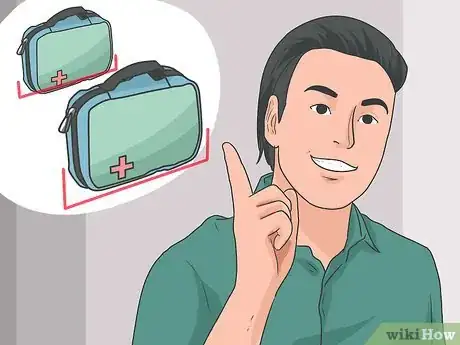


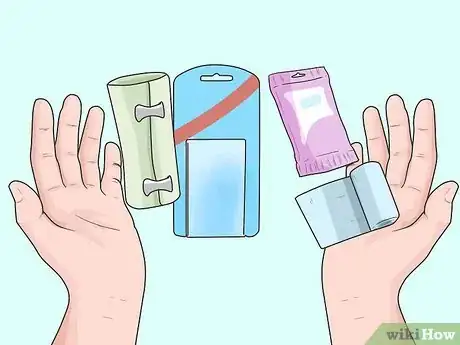
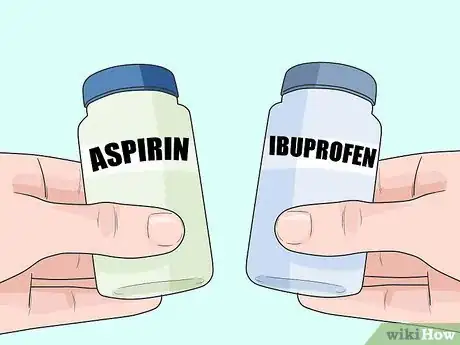
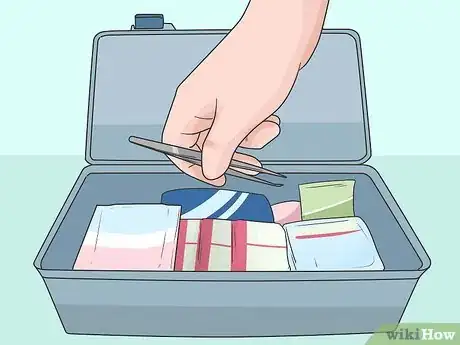
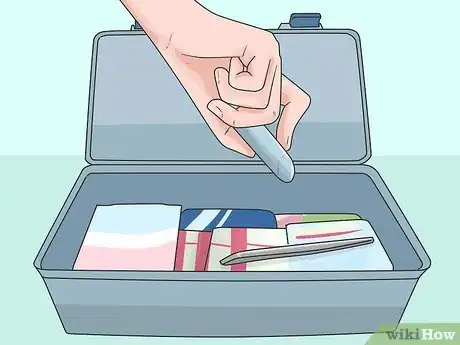
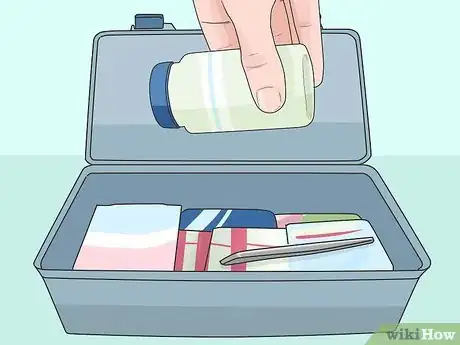

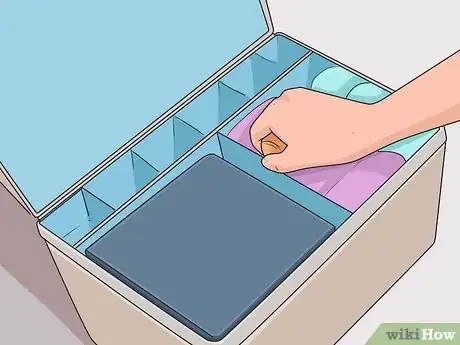
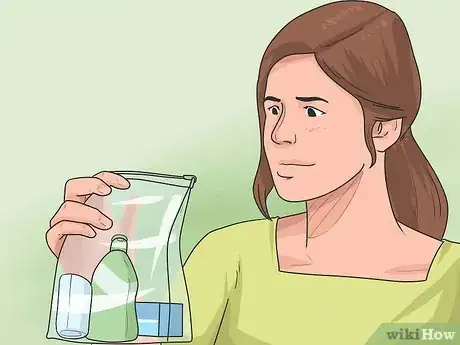

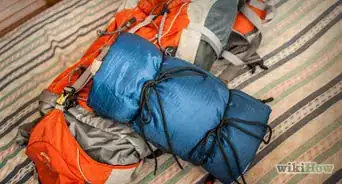


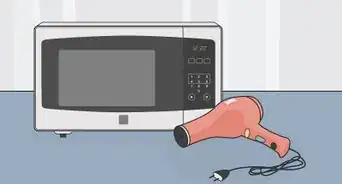
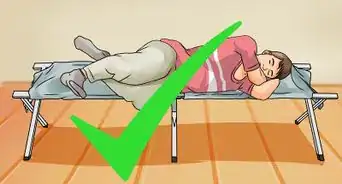
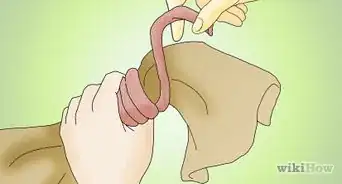
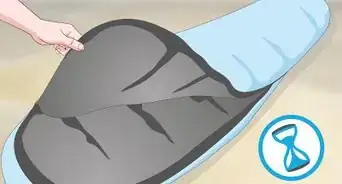
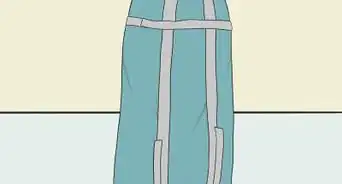

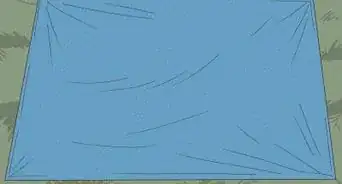









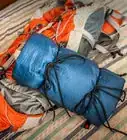






































Medical Disclaimer
The content of this article is not intended to be a substitute for professional medical advice, examination, diagnosis, or treatment. You should always contact your doctor or other qualified healthcare professional before starting, changing, or stopping any kind of health treatment.
Read More...